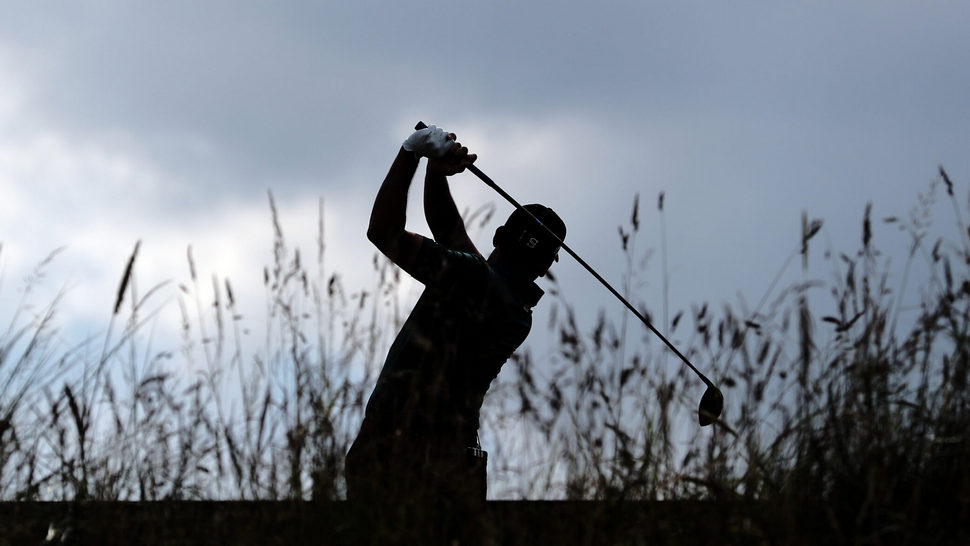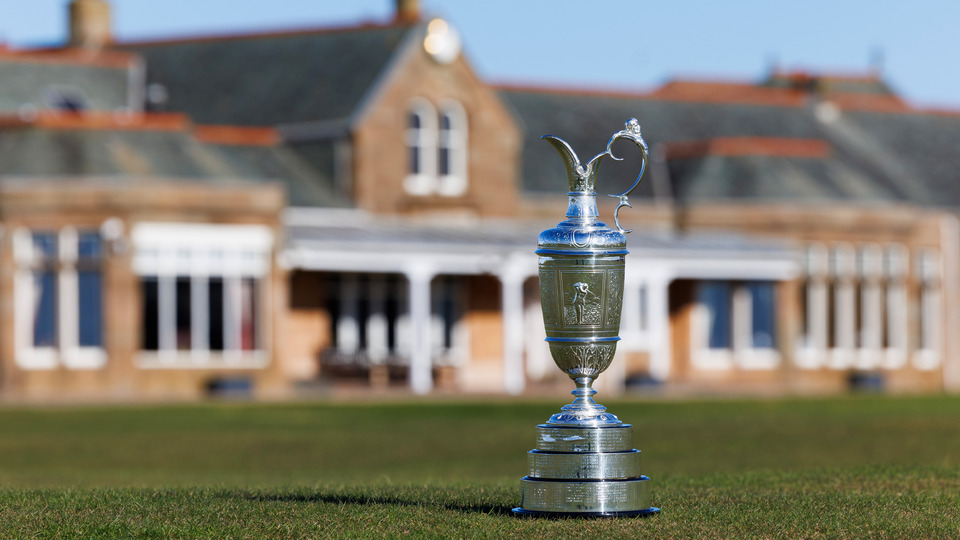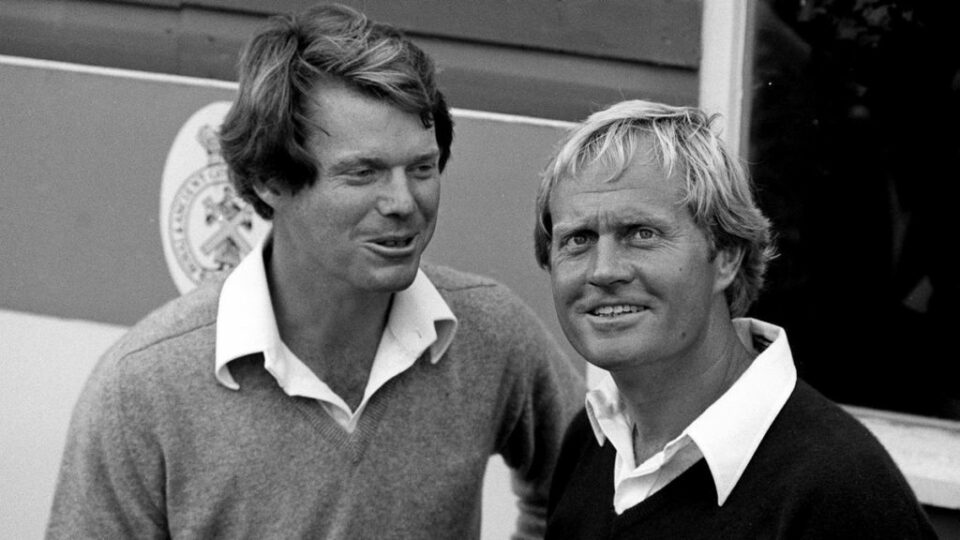Tuition
If You Slice - Read This
by Andrew HallA mistaken notion of swinging from the inside usually results in the exact opposite - an 'over-the-top' move that sees the right shoulder throw the club outside the play line, the classic cause of the slice. If that sounds and looks familiar, let me explain how to reverse the loop.
A lot of golfers have heard about the importance of swinging on an inside path, but they mistakenly believe that to achieve this they have to whip the club way inside the line at the very start of the backswing. just look at this first move away from the ball.
The hands and arms roll the club way inside the line, getting it too flat and too much behind the body. And when you make this mistake, you're left with no option but to lift the arms and club upwards to reach the top of the backswing.
There's no cocking or hingeing of the wrists to set the club up on plane. There's no 'loading' of the clubshaft, no real attempt to turn the upper body away from the target to get the left shoulder fully behind the ball.
No weight shift, no coil. No power.
Looking at this face-on, the upper body hasn't turned at all and the right hip has not moved out of the way. In short, no sign of any rotation. That lifting motion of the arms sees the club way across the line, and the momentum of that move forces the right shoulder to move forward starting down.
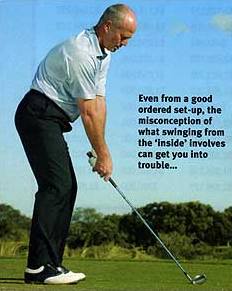
Even from a good ordered set-up, the misconception of what swinging from the 'inside' involves can get you into trouble...
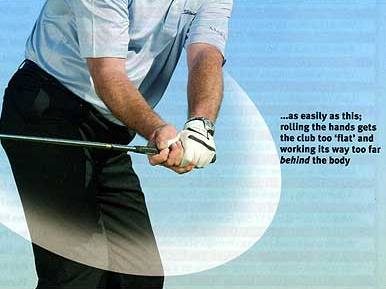
... as easily as this; rolling the hands gets the club too 'flat; and working its way too far behind the body
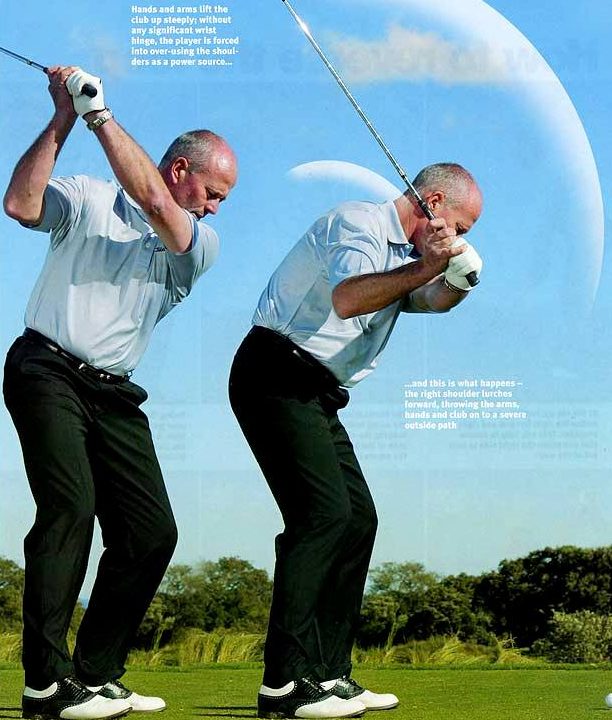
How to Reverse the Loop

At the set-up, remind yourself to soften the right forearm and right shoulder. This will help ensure that you prime the right side to turn out of the way.
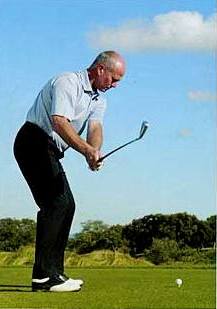
The hands remain 'quiet' as you get the swing underway, focus on keeping the clubhead outside the path of the hands (compare this with the severe inside move earlier).

Swing the club up on end - that's your goal as your hands reach waist high. a free-flowing wrist action gets the club swinging up on plane. Here it should feel light in your hands.
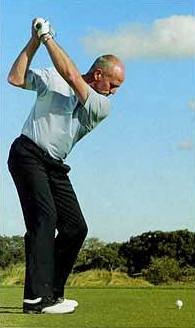
If you shift your weight in tandem with the direction of your swing, completing your shoulder turn gets you here. You're now fully loaded.
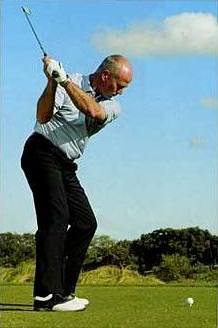
Unwinding the body from the ground up clears the way for the hands, arms and the club to fall into a good position. It's from here that you turn on the acceleration to strike the ball.
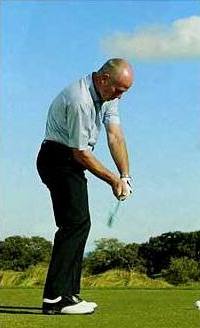
Right elbow works in towards the right hip - a good sign that you are delivering the club on the desired inside path. Note the right wrist remains 'loaded', ready to deliver the hit.
How to find the inside path
In the sequence you see here, I have exaggerated key moves to illustrate the sensations that you need to identify with in order to reverse the loop in your swing and get the club falling naturally into this inside slot as it re-routes in the downswing (right).
From the set-up, your overriding thought must be to take the club back outside the play line (i.e. the ball-to-target line). To achieve this, you will want to feel that the club is much more out in front of your body as you move it away from the ball.

This is a move that habitual slicers of the ball will feel very uncomfortable with. I get asked 'Isn't this picking the club up?' No. It's swinging the club up, setting the shaft at the right angle and putting it in a good position on its way to the top.
Once you have negotiated this initial movement away from the ball, completing the shoulder turn rewards you with a perfectly on-line backswing, the right side turned out of the way, hands and arms swinging up and over the right shoulder. The key is that from here, unwinding your body towards the target naturally clears the way for the arms to fall into a position from where you are poised to attack the ball from the inside.Look at the way the right elbow now works down towards the right hip - a new and totally different feeling altogether.
The key is that over-exaggerating this series of movements will, in time, gradually reverse the habit of throwing the right shoulder forward and 'over the top', replacing it with a wonderful feeling of settling your body in the transition, shallowing the club as you start down (right) and thus enabling you to maximise the leverage of the swing for maximum speed at impact.

Using a mid-iron, the ball teed-up, simply draw your right foot back a few inches to create the basis of this rotation drill
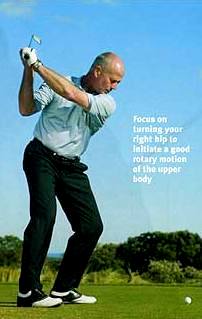
Focus on turning your right hip to initiate a good rotary motion of the upper body
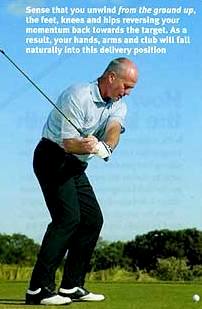
Sense that you unwind from the ground up, the feet, knees and hips reversing your momentum back towards the target. As a result, your hands, arms and club will fall naturally into this delivery position
Feel the natural path with right hand only
Let me round this lesson off with another good exercise that will further help to replace bad habits and feelings with good ones. Swinging with your right hand only on the grip leads to a series of good natural positions for the simple reason that you are not able to over-control the weight of the clubhead. With one hand on the grip, a real sense of swing takes over.
When I'm teaching, I will occasionally hit shots like this to illustrate just how effective a smooth rhythmic swing can be with one hand, but I'm not suggesting that you need to be quite that ambitious. You don't need to hit balls (although if you do feel up to it, make sure the ball is teed-up invitingly).
Swinging a mid-iron with the right hand only will develop your sense of a naturally correct swing, the weight of the clubhead hingeing your right wrist on the way to the top. As you unwind, the key then is that the club shallows as it begins its downward journey- i.e. it falls on the inside track. Once in this slot, the tennis players among you will understand when I say the release through impact is like a powerful forehand, rotating the club to the finish.

Start off slow, keeping the clubhead outside the path of your right hand
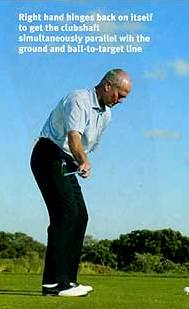
Right hand hinges back on itself to get the clubshaft simultaneously parallel with the ground and ball-to-target line
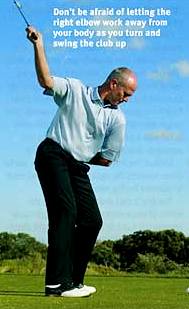
Don't be afraid of letting the right elbow work away from your body as you turn and swing the club up

Unwinding from the ground up again invites the hand, arm and the club to shallow out while the right shoulder works down
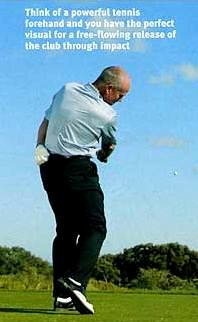
Think of a powerful tennis forehand and you have the perfect visual aid for a free-flowing release of the club through impact
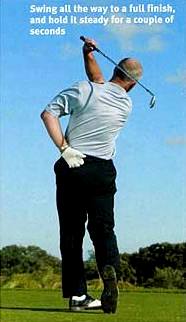
Swing all the way to a full finish and hold it steady for a couple of seconds
Right foot back gets 'loaded' behind the ball
In conjunction with thoughts of reversing the loop, and using the exaggerated feelings I described previously, try swinging with your right foot pulled back until the toe of your right shoe is level with the left heel, as I am doing here.
With your right side effectively out of the way (or at least partly out of the way), this helps you to develop a better rotation or turning motion of the upper body, which is vital in the process of eliminating the slice.
This is key: for solid ball-striking, you have to give yourself a chance to swing the club towards the ball from inside the target line. The purpose of the pivot motion is to coil your body and generate some power, certainly, but also to get your upper body properly stacked behind the ball (right).
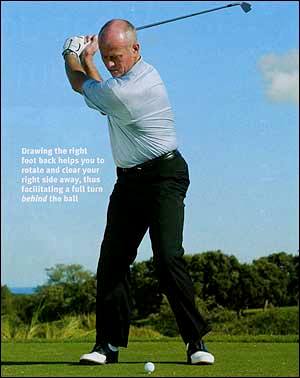
Drawing the right foot back helps you to rotate and clear your right side away, thus facilitating a full turn behind the ball
Only by doing that do you give yourself the room that you need to swing the arms back down from the inside. So use this exercise when you practise. Pull your right foot back, as I have, and give yourself all this space to swing down on the inside. When you achieve this, I guarantee that you'll experience a totally new feeling of freedom as you unwind and drop your arms and the club into this slot.
Compare this to the 'over-the-top' move on the opening spread: a world of difference as the right shoulder remains passive through the change of direction, perfectly poised now to unwind the arms and the clubhead at speed through impact.
